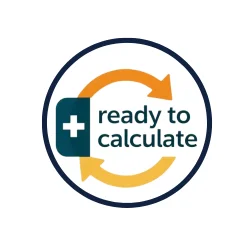What is Area in Mathematics?
Area represents the amount of space within the boundaries of a two-dimensional shape or figure. In mathematical terms, area quantifies the two-dimensional space occupied by a shape. For practical understanding, think of area as the amount of material needed to cover a surface completely.
Why Use Our Area Calculator?
- Instant and accurate calculations
- Support for complex geometric shapes
- Multiple unit conversion options
- Free to use with no registration
- Mathematical precision to two decimal places
Area Calculation Formulas and Methods
Basic Shape Formulas
Square Area Formula
Square area = a × a = a²
where ‘a’ represents the length of any side of the square
Rectangle Area Formula
Rectangle area = a × b
where:
- a = length of the rectangle
- b = width of the rectangle
Triangle Area Formulas
- Using Base and Height
Triangle area = (b × h) / 2
where:
- b = base length
- h = height (perpendicular to base)
- Using Two Sides and Included Angle
Triangle area = (1/2) × a × b × sin(C)
where:
- a, b = sides
- C = angle between sides
- Using Three Sides (Heron’s Formula)
Triangle area = √(s(s-a)(s-b)(s-c))
where:
- s = (a + b + c)/2 (semi-perimeter)
- a, b, c = sides of triangle
Circle and Related Shapes
Circle Area Formulas
- Using Radius
Circle area = πr²
where r = radius - Using Diameter
Circle area = π(d/2)²
where d = diameter - Using Circumference
Circle area = c²/4π
where c = circumference
Sector Area Formula
Sector area = r² × θ / 2
where:
- r = radius
- θ = angle in radians
Regular Polygon Formulas
Pentagon Area
Pentagon area = (a² × √(25 + 10√5)) / 4
where a = length of one side
Hexagon Area
Hexagon area = (3√3 × a²) / 2
where a = length of one side
Octagon Area
Octagon area = 2(1 + √2) × a²
where a = length of one side
Alternative method:
Octagon area = perimeter × apothem / 2
where:
- perimeter = 8a
- apothem = (1 + √2) × a / 4
Quadrilateral Area Formulas
Parallelogram Area
- Using Base and Height
Area = base × height - Using Sides and Angle
Area = a × b × sin(θ)
where θ = angle between sides
Rhombus Area
- Using Diagonals
Area = (d₁ × d₂) / 2
where d₁, d₂ = diagonals - Using Side and Height
Area = a × h
where:
- a = side length
- h = height
Trapezoid Area
Area = ((a + b) × h) / 2
where:
- a, b = parallel sides
- h = height between parallel sides
Practical Applications
- Construction and Architecture
- Floor planning
- Material estimation
- Cost calculations
- Landscape design
- Engineering and Design
- Technical drawings
- Product development
- Space optimization
- Pattern creation
- Education and Research
- Geometric studies
- Mathematical modeling
- Scientific calculations
- Teaching aids
Advanced Area Concepts
Irregular Shapes
To calculate irregular shape areas:
- Break down into basic shapes
- Calculate each section separately
- Sum all areas for total
- Verify measurements carefully
Area Under Curves
For curved shapes:
Area = ∫ᵇₐ f(x)dx
where:
- a = lower bound
- b = upper bound
- f(x) = curve function
Interesting Mathematical Facts
- Among all quadrilaterals with equal perimeter, squares have the largest area
- Circles enclose the maximum area for any given perimeter
- Similar shapes have areas proportional to the square of their linear dimensions
- The golden ratio appears in pentagon area calculations
Interesting Facts About Area Calculations
- The concept of area calculation dates back to ancient civilizations
- Ancient Egyptians used area calculations to measure farmland after Nile floods
- The Greeks developed many geometric formulas we still use today
- Modern area calculators can compute complex shapes in milliseconds
Frequently Asked Questions About Area Calculator
How accurate is the area calculator?
Our calculator provides results accurate to two decimal places, suitable for most professional and educational applications.
Can I calculate complex or irregular shapes?
Yes! Break down complex shapes into basic geometric forms, calculate each separately, and sum the results.
Which units are supported?
The calculator supports both metric (mm², cm², m², km²) and imperial (in², ft², yd², mi²) units with instant conversion.
Why use an online area calculator?
It eliminates manual calculation errors, saves time, and provides instant results for complex shapes.
Pro Tips for Accurate Calculations
- Always verify input measurements
- Use appropriate units consistently
- Double-check complex shape divisions
- Consider significant figures in results
Mathematical Properties
- Area is always positive
- Area is preserved under congruent transformations
- Similar shapes have proportional areas
- Area is additive for combined shapes

